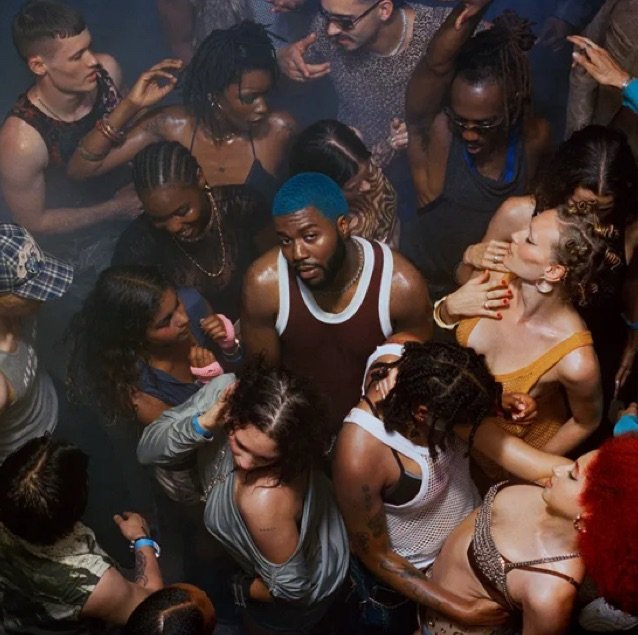
“This isn’t about good or bad. This is about power and who’s allowed to use it.”
The above line is from the third episode of Leslye Headland’s Star Wars series, The Acolyte. That episode, titled “Destiny,” explored the childhood tragedy that led to twins Osha and Mae (played so exquisitely by Amandla Stenberg in their adult form and with such raw, emotional vulnerability as children by Lauren Brady and Leah Brady) being separated. “Destiny” played out like a little fairy-tale-esque fable within the Star Wars universe, in which Headland and director Kogonada showed audiences this small corner of the galaxy (the mostly deserted planet of Brendok) through the eyes of the small coven of witches who live there. The latest The Acolyte episode, titled “Choice,” returns to the same series of events as chronicled in “Destiny” but gives audiences the story from a distinctly different perspective, and in doing so, changes the story entirely.
First things first, the title of the episode makes its intentions clear. Every episode of The Acolyte thus far has been named in a contrasting stanza of sorts. The first episode was “Lost/Found,” the second episode was “Revenge/Justice,” and the sixth episode was “Teach/Corrupt.” In between, episodes four and five played directly off of one another, with one being called “Day” and the next being called “Night.” Now, in this seventh episode, viewers have been treated to the second half of episode three’s story, meaning the juxtaposing titles here are: “Destiny” and “Choice.” Not only does this make the structure of the season feel cohesive and meaningful, where viewers gain additional knowledge that deepens the emotional impact of various beats from earlier in the story each week, but it also serves as a diametric encapsulation of the question at the heart of the series as a whole through titling alone. Even on such a micro scale, every element of The Acolyte has been so thoroughly thought-through and planned out with artistic intent and palpable motivation, which is just so wonderful to experience as a viewer.
In a great many ways, “Choice” plays out like Back to the Future Part II meets Harry Potter and the Prisoner of Azkaban meets Rashomon. The script by Charmaine DeGrate, Jen Richards, and Jasmyne Flournoy is carefully sculpted to mirror “Destiny” in structure and form. It shows us many of the same sequences of events from “Destiny,” often beat for beat, but does so from a different perspective. For starters, this allows director Kogonada and his crew to accomplish some truly impressive staging across the two episodes (these episodes were filmed back-to-back) that cannot be fully appreciated without having seen both halves of this story. “Choice” truly is the yang to the yin of “Destiny,” each informing and engaging in conversation with the other in illuminating, conflicting, and meaningful ways. In “Choice,” various characters and their actions are characterized in distinctly different ways than they were in “Destiny.” The literal descriptors of what they’re doing don’t change, but the context, metatext, and subtext of the acts have been recontextualized entirely by the lens through which we are seeing them.
Through tapping into the influence of Kurosawa’s Rashomon, Headland and Kogonada also tie these episodes of The Acolyte in thematically with Rian Johnson’s Star Wars: The Last Jedi, another Star Wars project that actively utilized Rashomon’s differing viewpoints to capture the ways in which a singular tragedy served to catalyze and calcify different characters in different ways.
Wonderfully, this entire idea is woven into the fabric of the thematic material of “Choice” as well. Several times throughout the episode, Carrie-Anne Moss’ character of Indara questions Lee Jung-jae’s Sol in his assessment of various things, always with the same central concern at the root: is what you are emotionally feeling from this person honestly what they feel, or is it something that you have projected upon them? In this way, The Acolyte engages in open conversation with the very idea of emotional interpretation that these episodes are so clearly centered on. The phrasing of the questions posed by Indara to Sol also ties meaningfully into the questions posed by Manny Jacinto’s Qimir to Osha last week. Whereas those questions caused Osha to reconsider the nature of her adult relationship with Sol, so too do Indara’s questions attempt to get Sol to reconsider the genesis of his relationship with Osha from the get-go.
These ideas meaningfully inform the episode and, by extension, the series itself. And that all pairs exceedingly well with an episode of Star Wars television that dives deeply into the morally grey areas of the franchise. “Choice” has a great deal of fun at the audience’s expense, unveiling various pieces of information to sway one’s allegiance between the two sides engaged in ideological and then physical conflict within the episode. At the end of it all, one can’t help but have those so incredibly delivered lines from “Destiny” by Jodie Turner-Smith’s Mother Aniseya ringing in one’s ear: this isn’t about right and wrong, it’s about power and who gets to wield it. While the episode seems to unveil some less than noble intentions on the part of the witches of Brendok in regard to the role Osha and Mae would ultimately play in the Ascension, but is that worse than what the Jedi plan to do?
Both have grander schemes for the twins and the role they may ultimately play within a given institution, but are either of them actually acting in the best interests of the child, or are they projecting their own desires onto the children? This is the kind of meaty stuff that “Choice” deals with in pretty profound ways and its steadfast commitment to not coloring in shades of black and white but rather in gray makes the tragic culmination all the more harrowing.
On a formal level, I found Kogonada’s direction and Miikka Leskinen’s editing to be nothing short of spectacular. For huge swaths of “Choice,” audiences are watching scenes they’ve already seen play out again in full, and yet the ways in which Kogonada and cinematographer James Friend have shot the scenes are entirely different. Here, the focus is on other characters, and as such, their visual language puts heavier emphasis on certain elements that were left to the peripheral on the previous go-round. This is equally true of Miikka Leskinen’s editing, which serves to accentuate and heighten the impact of each of these differentiating choices in powerful ways. I genuinely believe there’s a masterclass to be taught simply on the ways in which “Choice” is able to augment the emotional response of its audience solely through visual grammar alone, because it is remarkably articulate.
All of the performances here are wonderful, with a special mention going to both Jodie Turner-Smith and Lee Jung-jae, both of whom go above and beyond here to externalize the driving internal theology behind their characters in startling ways. Also, Joonas Suotamo deserves special praise here for the physical prowess of his performance as Kelnacca. After spending several years playing Chewbacca in the more recent Star Wars films, The Acolyte sees Suotamo being given the chance to wield a lightsaber as a Wookiee, and he kills it. It’s like watching a grizzly bear slug a chainsaw around like a baseball bat, it’s nuts.
Michael Abels’ musical score continues to be a bright spot, and he has just as much ingenious fun recontextualizing his musical motifs from “Destiny” here as Kogonada does with the visuals. The ways in which Abels has proven consistently so provocative in his musical choices from week to week are so deeply admirable, and his work here is fantastic.
RGM GRADE
(B+)
Overall, “Choice” is a fantastic episode of The Acolyte which both stands on its own two feet as an excellently made work unto itself and one whose larger themes and motifs sew back into the series as a whole, developing it into a more deeply affecting work.
Discover more from RATINGS GAME MUSIC
Subscribe to get the latest posts sent to your email.










